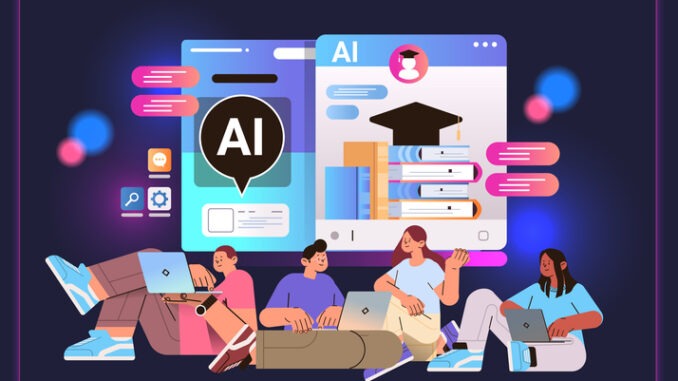
Gary Henderson delves into the multifaceted considerations surrounding AI in education, ranging from issues of plagiarism and copyright to concerns about bias
Before delving into the challenges and pitfalls of using AI in education, it’s crucial to establish my stance: I’m generally optimistic about AI’s potential to enhance education. That said, I also think we need to be conscious that AI is not a silver bullet, and it doesn’t come without risks or challenges, so it is crucial that we are aware of these risks and challenges, and how we might seek to mitigate them.
The plagiarism problem
A significant concern tied to AI’s integration in education is the potential for students to present AI content as their own and plagiarise from AI tools without any understanding of the content. This blurs the lines between originality and replication, challenging the very essence of academic integrity. For me, the key to addressing this may be significant changes in education and how we assess, accepting the fact we now live in a world with ready access to AI tools. Other than this it’s about fostering a culture of academic honesty and educating students about the ethical implications of using AI-generated content without appropriate acknowledgement or, more importantly, understanding.
Copyright conundrum
Generative AI relies heavily on vast training data to refine its algorithms. However, this data often originates from internet scraping, potentially encroaching upon copyright boundaries. Moreover, determining ownership of AI-generated content poses another quandary. Whether it’s an image produced “in the style of” a specific artist or any other creative output, the lines of ownership blur. Legal ambiguities abound, with pending court cases likely to provide little more clarity. Educational institutions must, therefore, navigate this landscape cautiously.
Accuracy dilemma
AI algorithms excel at data processing and prediction, yet they aren’t infallible. They might confidently present statistically probable outcomes that defy factual or logical coherence. Thus, fostering critical thinking skills among users—students and educators alike—is imperative. Blindly accepting AI-generated content as truth can lead to erroneous conclusions. Particularly in educational settings, where AI could aid in lesson planning or grading, verifying content accuracy, and the resultant need for human checking and critical thinking skills becomes paramount.
Data protection predicament
The intersection of AI and data protection raises significant concerns. When students or staff contribute data to AI systems, ensuring compliance with stringent regulations like GDPR becomes all the more important, and the need for transparency with parents is equally important. Safeguarding sensitive data, enabling user access and deletion, and adhering to privacy principles are essential. However, as AI companies strive to amass data to refine their systems, questions arise regarding their adherence to privacy standards. Therefore, educational institutions must scrutinise AI solutions’ privacy policies rigorously, and obtain informed consent from data subjects where appropriate.
Bias bewilderment
AI algorithms possess the potential to inadvertently perpetuate biases, exacerbating inequalities in education. I have evidenced bias personally simply by asking an image generation solution separately for images of a doctor and a nurse; I am sure you can guess the gender, racial and age bias that resulted. The ease of demonstrating bias in image generation tools underscores the risk of reinforcing prejudices in educational content where AI tools will increasingly be used. Hence, promoting critical thinking again becomes imperative, encouraging users to recognise and counteract biases inherent in AI systems.
Risk of over-Reliance
Another concern looms over the propensity for over-reliance on AI solutions in education. While AI streamlines processes and enhances productivity, excessive dependence could erode critical thinking and creativity—skills essential for navigating an ever-evolving landscape involving AI tools. Moreover, reliance on AI-driven recommendations without understanding or validation impedes the development of problem-solving abilities. Striking a balance between human intervention and AI assistance is crucial, ensuring that both entities complement each other while mitigating associated risks.
Concluding comments
Integrating AI in education offers immense potential but necessitates adept navigation of its complexities. Addressing copyright issues, ensuring content accuracy, upholding data protection standards, mitigating bias, and avoiding over-reliance is paramount.
It is worth noting here that this piece itself was written with the help of AI. I used AI to create an initial draft, to refine my drafts as I made changes, etc. I think I got to a final version quicker, and the result is better than I would have produced without the help of AI. Now, you may have spotted AI involvement already as I have purposely left in some of the flowery language which AI tends to use, such as “propensity”; not a word I would have picked out, but maybe AI has just helped broaden my vocabulary. The alliteration in the titles also came about because of support from an AI tool.
But in all, the piece is mine and represents my views on the risks we need to be aware of. AI is here to stay, and will only improve, so we need to get used to it.


Be the first to comment